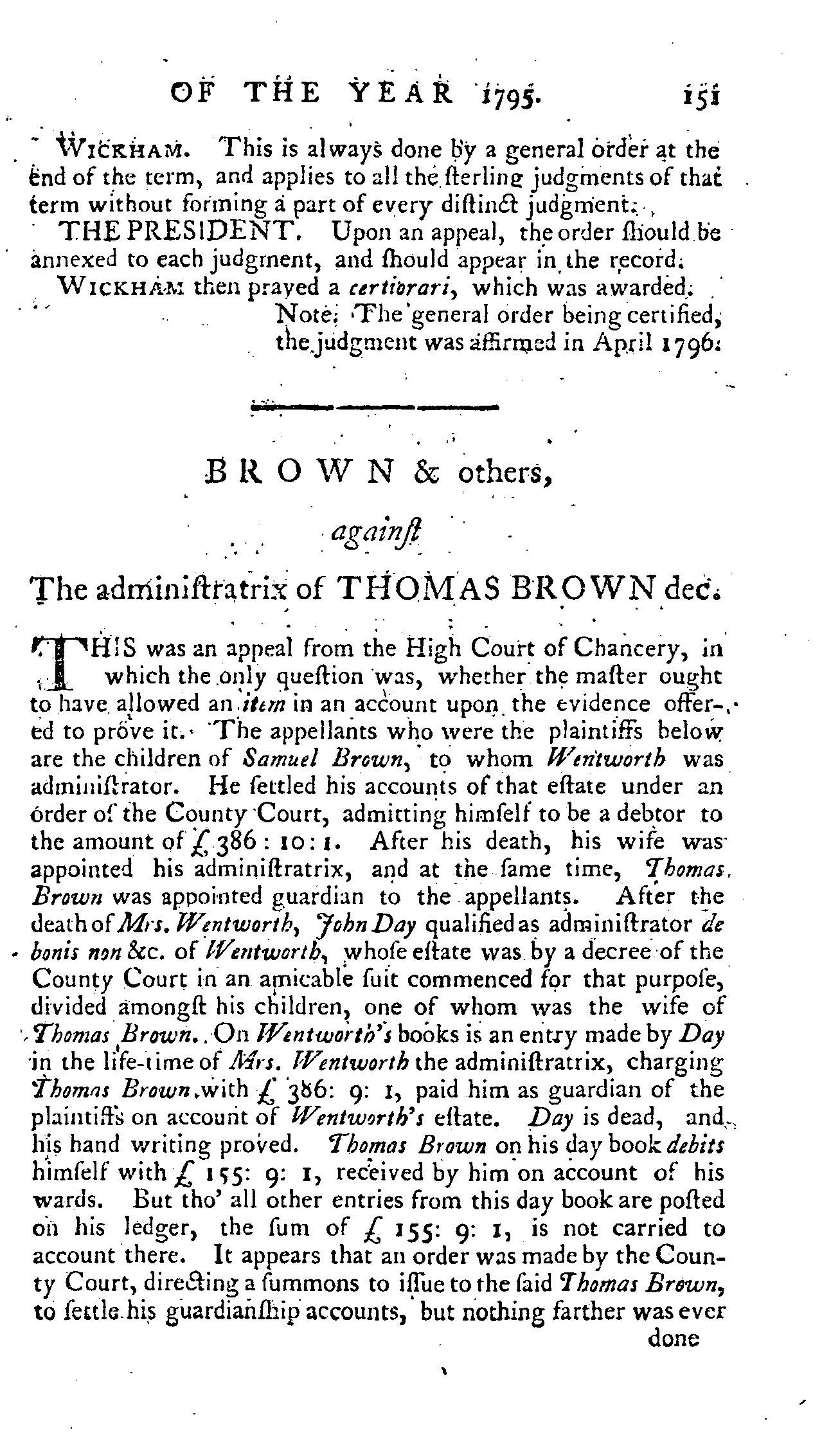Brown v. Brown

Brown v. Brown, 2 Va. (2 Wash.) 151 (1795),[1] the court resolved account discrepancies of the estate.
Background
Samuel Brown passed away and his administrator, Wentworth, saw to the execution of his estate. Wentworth also owed Brown’s estate about £386. After Wentworth died, Thomas Brown was appointed the guardian of Samuel Brown’s children and Wentworth's widow became the administrator of her husband’s estate. After her death, John Day became the administrator of the estate. However, not long after, a suit was filed to divide the Wentworth estate among his children, one of whom was the wife of Thomas Brown. According to documents, while Wentworth's widow was alive, John Day paid Thomas Brown the £386 debt on behalf of Wentworth to the Brown orphans. However, Thomas Brown’s ledger showed no instance of payment, yet for a sum of £155, in spite of keeping accurate records of accounts on the same day. The children of Samuel Brown sued for the amount they believed Wentworth owed their estate.
The Court's Decision
Chancellor Wythe found for Thomas Brown, but the Court of Appeals reversed the judgment.
See also
References
- ↑ Bushrod Washington, Reports of Cases Argued and Determined in the Court of Appeals of Virginia, (Richmond: T. Nicolson, 1798), 2:151.